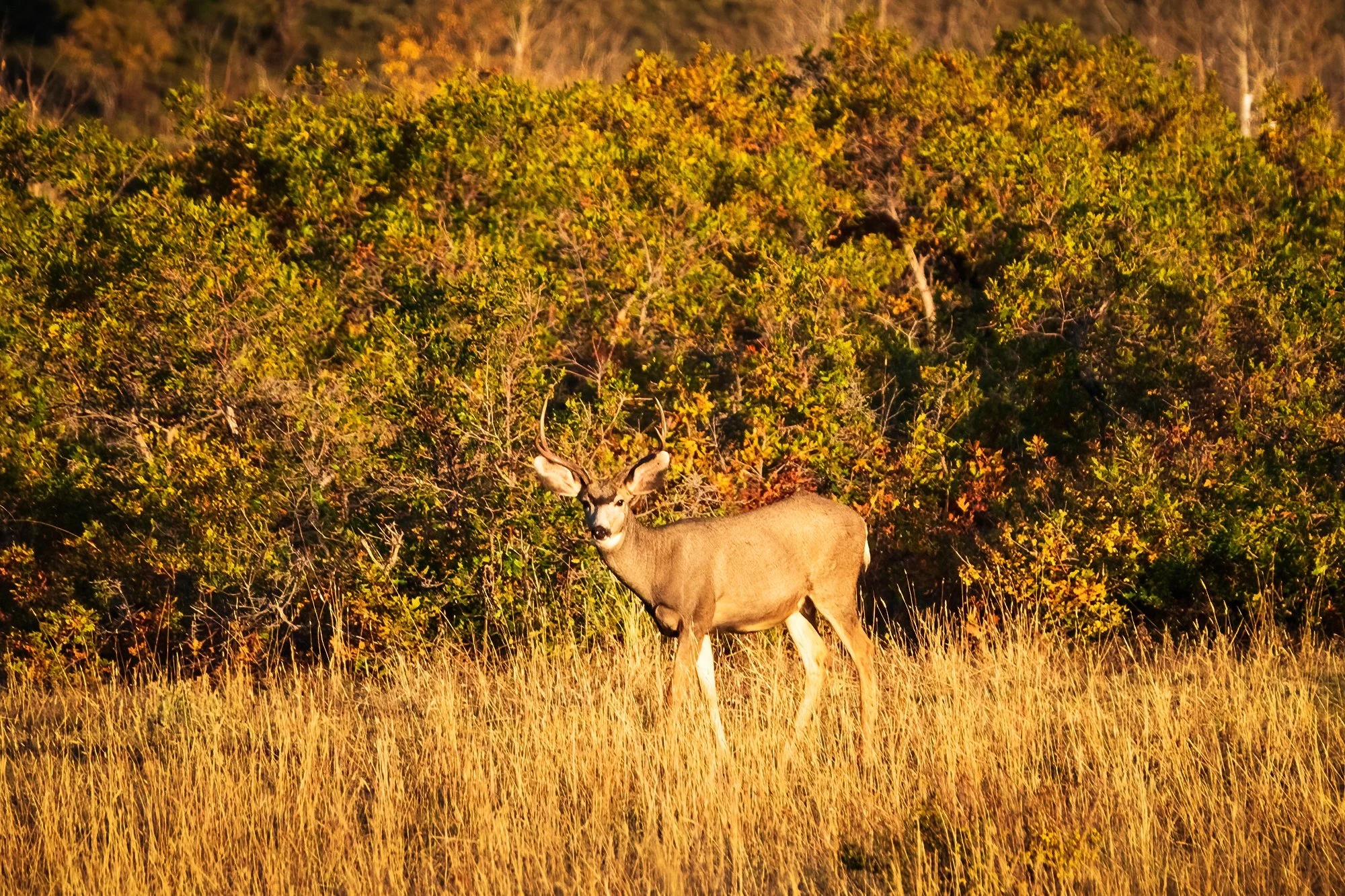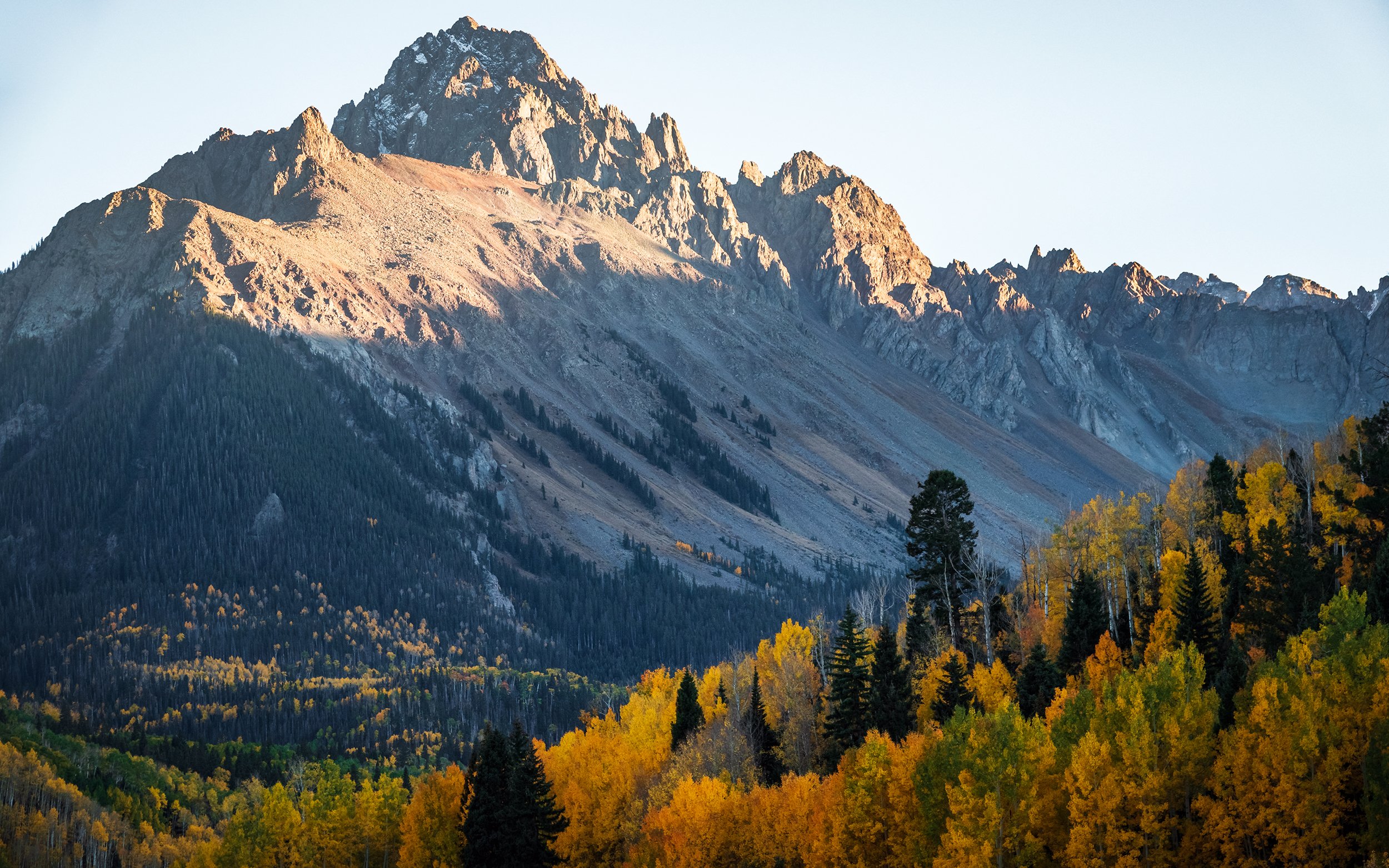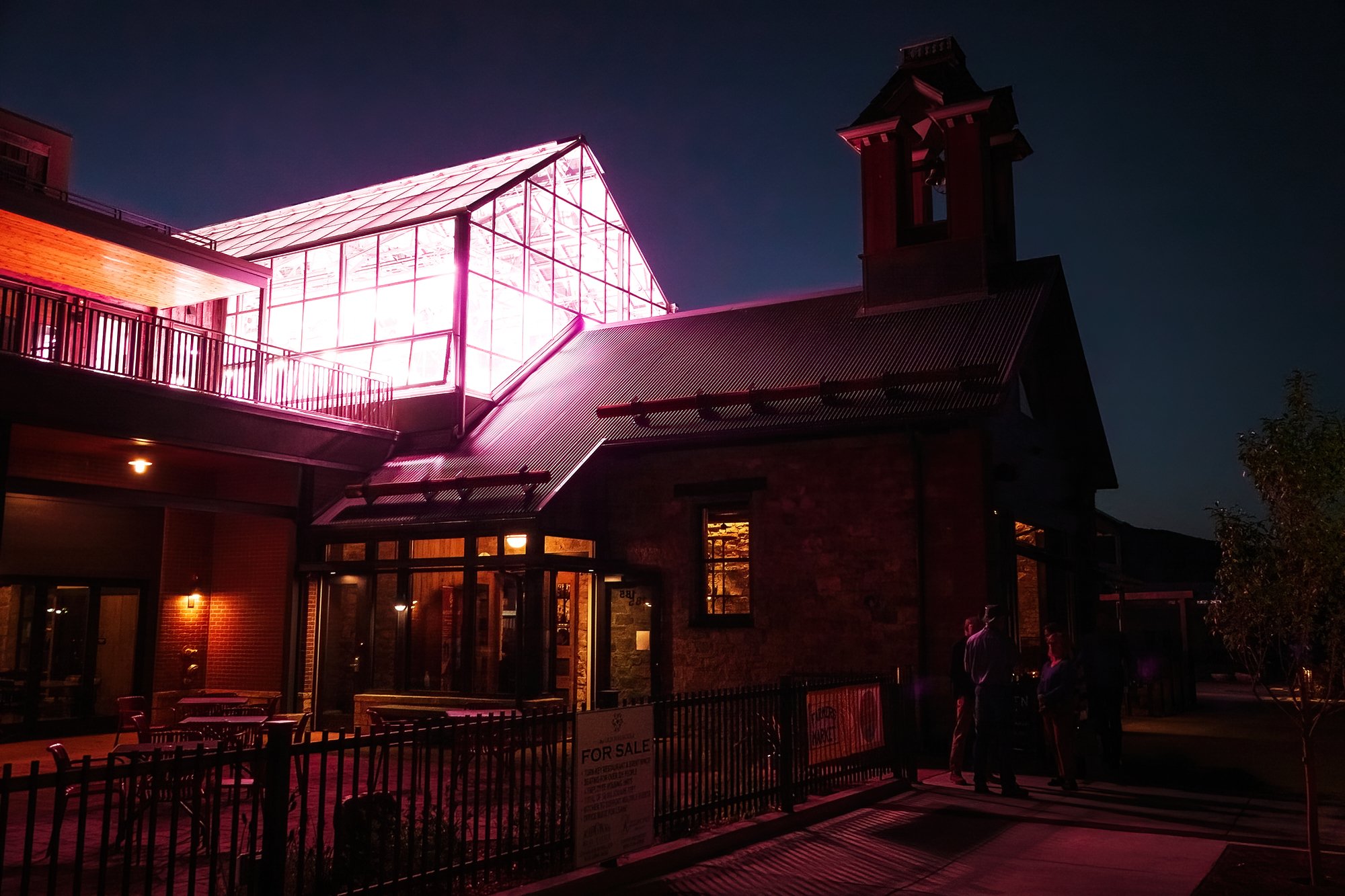It’s been a beautiful, productive few days of photography in the environs of Ohio Pass and Kebler Pass, but on Tuesday, it’s time for me to head west and see more of the wild landscape that Colorado’s Western Slope has to offer. First, in the morning, I make the short drive back up to Mt. Crested Butte’s ski condominiums before daybreak, to spend the morning golden hour on a hillside above town. It’s yet another unremarkable, virtually cloud- and drama-free sunrise, but I make the most of it while exploring a small desire path through the sagebrush, shooting the flanks of Mt. Emmons and the surrounding peaks as they glow pink from the rising sun. Back in town, I enjoy a relaxed morning, partaking the guesthouse’s breakfast of ham-and-egg croissants, pastries, milk, yogurt, and fresh-squeezed orange juice not once, but twice, while gradually packing and getting ready for the drive west to Ridgway. I am in no particular rush today, as the day’s itinerary calls for a meandering drive westward past Gunnison and the Blue Mesa Reservoir, then south through Cimarron and the Uncompahgre Wilderness, where I plan to catch sunset in a rather remote and difficult spot before finishing my drive late at night. No use in rushing, as long as I can be in position in time for a wilderness sunset.
In the late morning, I drive out from Crested Butte, taking the highway back south to Gunnison, where I fill up the tank before taking a stroll along the Neversink Trail, which parallels the Gunnison River. It’s another impressively sunny day, but the cottonwoods above offer a good bit of shade, and a splash of colors to boot. After a lazy walk by the river, it’s further west to the Blue Mesa Reservoir, where pink puffs of shaggy portulaca bloom on the shallow, sandy shore. In the car, I head west, passing by two sections of roadwork and bridge repair on U.S. 50 while enjoying my music in the car. Departing from the banks of the reservoir and the waterways of Gunnison country, the highway climbs into a narrow pass and emerges atop Blue Mesa and Fitzpatrick Mesa, where colorful scrub oak, rabbitbrush, and stands of aspen cover the plateau as far as the eye can see. Unable to stop the car along the twisting, winding highway, I forgo any photographs and capture the scene only with my eyes. A few miles further down, on the west end of the mesa, I turn off the highway and onto Big Cimarron Road, which carves its way up-valley into the heart of the Uncompahgre Wilderness.
My main regret from this trip, aside from the preponderance of clear blue skies, is that I did not budget any more than an afternoon drive to explore the Uncompahgre Wilderness, a vast and isolated area of steep canyons, mountainous plateaus, and forested slopes centered upon the rocky massif of Uncompahgre Peak and its surrounding high summits. Big Cimarron Road cuts into the wilderness from the north, winding its way south along the valley until its reaches Silver Jack Reservoir and a network of dirt access trails that fade into the surrounding mountain passes. I stop at many points along the relatively maintained gravel road, shooting compositions into the heart of the wilderness with my long lens, which helps cut the blue glare and grey haze induced by the mid-day sun. Further south, the road passes a series of campgrounds and working ranches before arriving at the shores of Beaver Lake and Silver Jack. At Silver Jack, I enter the day-use area, taking a short walk down through a beautiful aspen grove to reach the path around the reservoir. Standing atop a boulder above the forest, I find a wonderful panoramic view of the reservoir and the surrounding hillsides - covered in golden aspens, with the craggy outlines of Courthouse Mountain and Sheep Mountain in the distance, beyond the winding shoreline. Once again, I’ve managed to hit upon excellent foliage conditions here in Uncompahgre - indeed, some of the best leaf colors that I’ll see for the rest of the week.
Back in the car, I continue along the dirt road as it meanders south between the mountain chains, ultimately climbing through forest and turning westward into the Owl Creek drainage. At the top of Owl Creek Pass, I reach the trailhead for my final walk of the day.
When I say, “trailhead for my final walk of the day,” I need you to understand that ‘trailhead’ is a significant overstatement, just as ‘walk’ is a significant understatement. I’ve arrived here a full two and a half hours before sunset, precisely because my next objective involves a steep, uphill bushwhack through the forest, to a clearing overlooking the aspen groves of upper Owl Creek Pass and the mountains of the Uncompahgre Wilderness. Following the contours of the topo map on my phone carefully, I pick my way over, under, around, and in some cases through the jumble and deadfall of the untrammeled forest, making gradual progress along the ridge north of Owl Creek Pass - up one hill using my hands and feet, panting and sweating the entire way, then down, then up again. A few times, checking my progress against the time, I nearly decide to turn around and abort the walk, worried as I am about how deadly this bushwhack will become after nightfall. But I decide to press onward, extremely slowly and carefully, in the hopes that I won’t be alone on the ridgetop and might have company on the journey back down. Despite taking care of where I step, I get at least one or two lashes on my leg from sharp tree branches and downed barbed wire fencing - thankfully, no puncture wounds or significant injuries. After a final steep, breathless climb, the open sky emerges through the golden canopy, and I reach the overlook ridge at last.
I’m joined over the next hour by a few other intrepid photographers who made the climb through the forest — most of us having started from various places on either side of the pass, apparently none of them any easier than what I just endured. We set up our cameras carefully on the open ridgeline, using rocks and backpacks to anchor tripod legs onto the steep, loose slope. One hiker climbs the rocky bluff to the right (south) of the ridge; we gasp as she nearly loses her footing shimmying around the fully vertically-exposed cliff face; a pile of loosened rocks goes hurtling off into space, landing with a shuddering crack in the forest below. After exhaling a collective gasp (alongside the line of photographers who nearly recorded a fatality), I take a shot with the hiker overlooking Owl Creek Pass.
After a long period of sitting, chatting with other photogs about our individual adventures, and tending to my timelapse, the sun begins to fall to the west of Owl Creek Pass, bathing the intervening aspen forests, and the flanks of Courthouse Mountain, in a maroon-and-gold glow. Packing my tripod and donning my wind layer and headlamp for the journey back down the hill, I fall in with a fellow photographer from North Carolina. The two of us decide to stick together for the long, dark descent back to our cars. The return, harrowing as it is to pass through the deadfall with only our headlamps, is made a lot more bearable by safety in numbers - although we do spot an ominous pair of glowing eyes at one point (some sort of fairly large mammal in the darkness), and toward the end, we manage to veer off-course onto the eastern side of the ridge and wind up having to slog partly back uphill to our vehicles at Owl Creek Pass.
Back at the car, after saying farewell to my walking companion, wiping off, rehydrating, and doffing my sweat-soaked beanie and dirt-crusted gloves, I make the long, bumpy drive down the road from Owl Creek Pass westward to US 550. It’s a somewhat creepy drive in the darkness - made worse by the knowledge that I am fairly isolated out here, many miles from civilization, with zero cell coverage, and unlikely to find help for hours if I puncture a tire or suffer any other car trouble. To compound matters, my GPS unit keeps pointing me toward odd turns onto various dirt offshoots which appear scarcely more than hiking trails crisscrossing the wilderness - a recipe for a disastrous survival situation, if I ever knew one. Fortunately, I studied the area map carefully before my trip, and have grown over the years to be naturally distrustful of the old Garmin’s bizarre fetishes and fallacies. After a long and careful drive, shortly after 9 PM, I exit the county road and pull onto the highway; a few minutes later, I reach town, where I settle in for the night at Mtn Lodge Ridgway. A long shower, a careful wash of the tree-lashed nicks and bruises on my lower legs, and a hot bowl of noodles later, I climb into bed and fall into a deep, well-deserved sleep.























































































































































